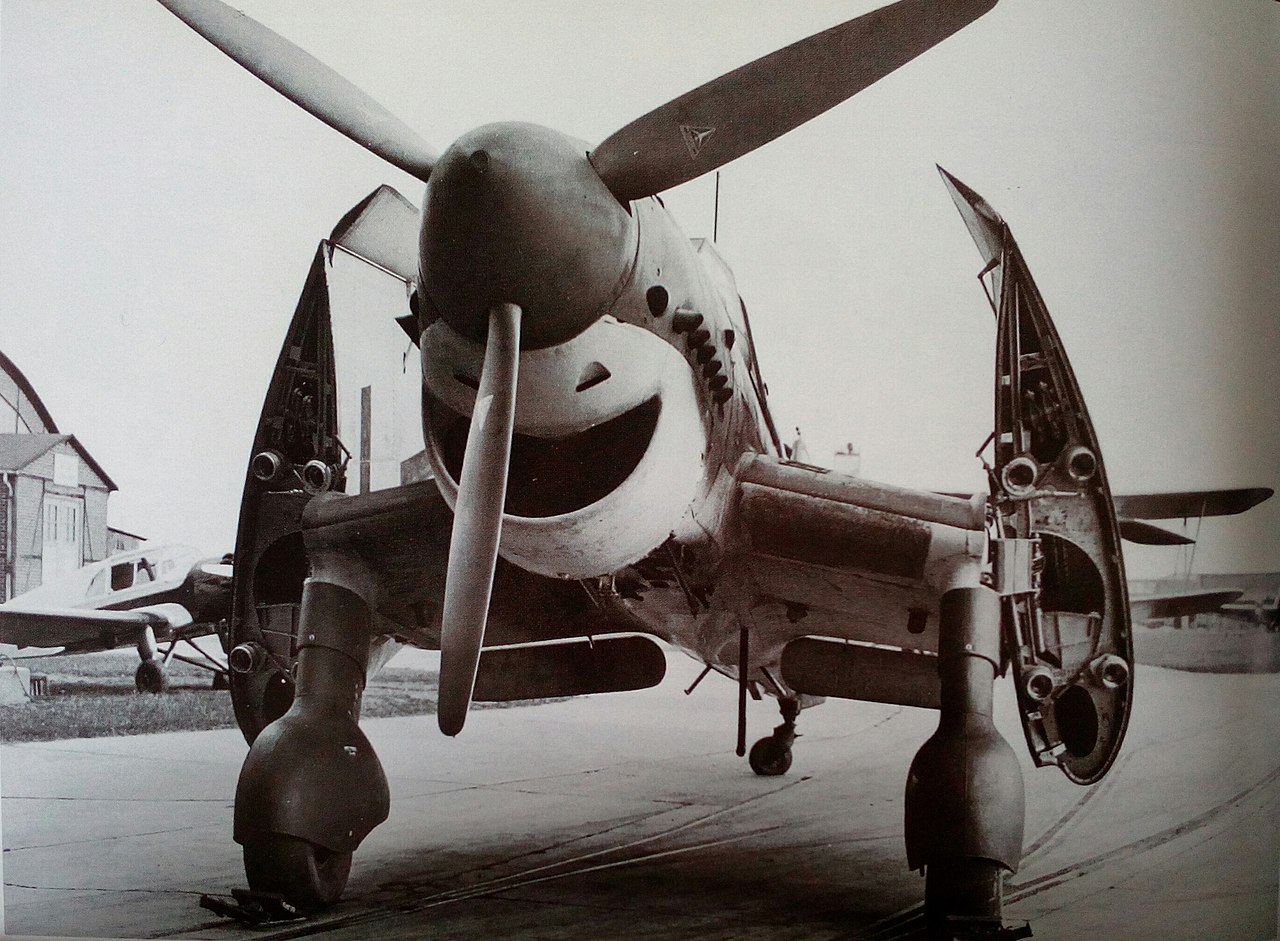It's time once again for our regular Open Thread. Talk about whatever you want, so long as it isn't Culture War.
Overhauls are Weird British Anti-Ship Weapons of WWII and for 2023, Military Spaceflight Part 4 and NWAS Trident Part 3.
It's time once again for our regular Open Thread. Talk about whatever you want, so long as it isn't Culture War.
Overhauls are Weird British Anti-Ship Weapons of WWII and for 2023, Military Spaceflight Part 4 and NWAS Trident Part 3.
The Motherly One and I went to Boise, Idaho to attend a wedding so we decided to add a few days on the front end to check out the town. We did the State Capitol, which was a disappointment as nothing was open within the building and it was somewhat boring as everything was the same white marble. We also planned to check out the Warhawk Museum, the Old Idaho State Penitentiary and found on the grounds of the Old State Pen, the J. Curtis Earl Weapons Collection.
Nampa, ID
$15 for normal adults, kids are $5, discounts for seniors and veterans.
Website

As the Motherly One stated “This is a war museum with a few airplanes thrown in” and I agree. There were tons of war memorabilia which is not military equipment but personal artifacts and stories of men and women who have served in the armed forces from WW I and forward. The self-guided tour has over 300 entries in the provided paper guide and if you wish to go digital there is also an app you can download. Read more...
In the Naval Gazing Discord, John Schilling shared this analysis of the Ukrainian offensive of the past few days, and I asked him if I could post it here:
OK, I've had a chance to go through my usual sources, and I'm beginning to get a coherent picture of what's going on in Kursk:

It’s pretty solidly confirmed that Ukraine is digging in around Sudzha, about 10 km inside Russia proper. This is the site of a major natural gas pipeline junction & terminal, but I don’t think that’s actually very important – if the Ukrainians wanted to shut that down, they could have done it with their own artillery pretty much any time since March 2022. There are also reports of Ukraine defending against counterattacks in Kurenevo, NW of Sudzha and about 25 km inside the border. Credible reports of Ukrainian forces in Molyivtina(sp?), 35 km north of the border, and credible but unconfirmed about 50 km NE along the R-200 highway – more than halfway to the city of Kursk.
Those last, if true, are at the tips of narrow salients and probably raids rather than attempts to clear and secure territory. There are many reports of Ukraine bypassing and isolating Russian strongpoints; I’m going to tentatively guess that they are clearing and securing most everything inside the Sudzha/Kurenevo perimeter, and just raiding outside that. But their raiding parties may be just 25 km from the Kursk nuclear power station, and 30 km from the E-105 highway from Kursk to Belgorod, and Russia still doesn’t seem to have a firm defense in place.
Ukraine has pretty clearly achieved tactical and operational surprise in this operation, which is an impressive achievement in a world of ubiquitous satellites, drones, and social media. I’m leaning towards the theory that Putin pulled a Stalin, looking at reports of German, er, Ukrainian troops massing along a weakly-defended border and doing nothing because invasion was literally unthinkable, he’s the guy who does invasions, and there’s no place for something like this in the Master Plan.
Ukraine appears to be bringing their A-team to this one, the 22nd and 116th mechanized brigades and 82nd air assault (really another mech brigade), among others. These aren’t the light infantry and motorized cavalry raiders we’ve seen before. On the Russian side, confirmed reports of the 488th Guards motor rifle regiment taking losses, but also T-62s and MT-LB technicals being brought up. So more of a “whatever’s available” stopgap defense rather than a coordinated counterattack. This does suggest that Ukraine is drawing relatively more of its own forces away from the Donbas than Russia is, so Ukraine seems to value this operation for its own sake rather than just to relieve pressure elsewhere.
There have been concurrent amphibious raids on the Kinburn Spit in southern Kherson, which may be intended to prevent Russia from redeploying from Kherson to Kursk. Also substantial drone strikes at the Lipetsk and Morozovsk airfields, fairly deep inside Russia, reportedly destroying stockpiled munitions. The Lipetsk strike came after the initial Kursk assault, and may have taken advantage of disrupted EW coverage – the Russians will eventually reconstitute that, not sure how long it will take. For now, Russia will be handicapped in using air power to block the Ukrainian advance.
The Ukrainians have been taking POWs by the hundreds, at least, and mostly conscripts. This matters, because conscript POWs are a much bigger deal in Russian civil society than misplaced “contract soldiers”. Hence Moscow generally keeping the conscripts inside Russia and pushing the contract regulars into Ukraine. A hefty batch of conscript POWs could be a substantial bargaining chip in, e.g., a future prisoner exchange.
How logistically sustainable all this is, is an open question. I expect Ukraine can keep brigades just over the border in Sudzha supplied almost as well as they can the brigades playing defense in the Donbas, but that problem gets exponentially harder the deeper they advance into Russia. One key indicator will be any attempt to repair rail links across the border and establish Sudzha as a railhead.
Ukraine has been using Marders on Russian soil, and HIMARS in more than a counterbattery role, which I think would have been a no-no a few months ago, but the US and NATO are now apparently OK with that and the US has explicitly said so. Ukraine is reportedly asking permission to use ATACMs in support of this offensive, but hasn’t done so yet. No F-16s, Leopards, or Abrams that anyone has seen. Which is a pity, because I really want the Second Battle of Kursk to involve M1A2s going up against hastily-demothballized T-34/85s.
Suggests that there’s a political dimension to this, and it may not be a coincidence that this comes about a month after Biden dropped his bid for a second term. Possibly Biden is trying to lock in his legacy with a foreign-policy win, taking the gloves off Ukraine, or possibly Biden has just lost interest in the whole thing and his national security team is responsible for the new posture. I’m skeptical of the latter, but who knows. On the Ukrainian side, Zelenskyy et al may feel they need a game-changing victory before November, lest the next POTUS decide to quietly forget about Ukraine.
Also on the political dimension, there’s been a lot of pressure on the Western side to treat the conflict as an irredeemable stalemate and push for a ceasefire along current lines. And increasingly rumors that Russia was pushing for the same thing, at least for now. Redefining “current lines” to include a big chunk of Russian territory under Ukrainian control, pretty much takes that off the table. And if there’s going to be a ceasefire with exchange of territory, the Schelling point is pretty obviously “all of yours for all of ours, back to prewar borders”, though I think 2022 borders are more realistic than 2014 in that regard.
Also also on the political front, the “Oh noes, we can’t have Russia lose this war or they’ll throw a nuclear temper tantrum and kill us all!” faction has taken a big hit. A Moscow that demonstrably won’t go nuclear against an invading army taking and holding significant territory inside Russia, is a Moscow that is highly unlikely to go nuclear just because it was forced out of the Donbas. That wasn’t absolutely knowable in advance, which makes this a particularly ballsy move for Kyiv, but it looks like a winning play now.
As for why the Ukrainians are doing all of this, several possible concrete motives have been alluded to above. But this is war, and war is more than a concrete physical exercise. This offensive changes the narrative, from “slow grinding Ukrainian defeat” to “anything can happen”. And the narrative matters. Morale, definitely matters, and this is going to be a big boost on the Ukrainian side as well as a downer in Russia.
Ships only sink when you let air out and water in. This fundamental truth was a problem during the age of the gun, as gunfire, while quite effective at disabling the enemy, is not particularly good at either. Even the occasional shot "between wind and water" was unlikely to sink the enemy very quickly. Shot also had a second problem, in that the guns to deliver it were large and expensive, and required big ships to carry them.

The obvious way to solve this was to use explosives, and the first man to make a serious attempt at this was Dutch inventor Cornelis Drebbel, who developed what we now know as the spar torpedo as a weapon for his submarine, the first ever to successfully navigate underwater. His concept was extremely simple, a bomb on the end of a stick, which would be set off in contact with the enemy ship. Details about use are unclear, but he was a consultant to the British Admiralty for several years before they apparently became disillusioned with the idea and fired him. Read more...
It's time for our usual Open Thread. Talk about whatever you want, so long as it isn't Culture War.
Overhauls are Signalling Part 4, EABO and LAW and for 2023 my review of Fort MacArthur and Military Spaceflight Part 3.
We finally come to the conclusion of reader Suvorov's series on Confederate commerce raiding in the Civil War, which has stretched from strategy and leadership through privateering, efforts to procure ironclads and the efforts of Raphael Semmes and the British-built Alabama, wrapping up after the end of the war.

In aggregate, the Confederacy destroyed nearly 250 merchant ships; about one thousand other American-flagged vessels were transferred to a foreign flag, in part to avoid risk of seizure and in part to reduce insurance premiums. Percentage-wise, around 5% of Northern shipping was destroyed. Other portions of the U.S. merchant fleet switched flags, hoping to avoid being targeted by raiders. Ultimately the size of the U.S. merchant fleet was roughly cut in half during the conflict (although, due to merchant ships flagging out, this does not imply a corresponding loss in commerce to the States.) The Union government spent around $3 million deploying about a hundred warships and other vessels to run the commerce-raiders down, mostly unsuccessfully. Read more...
During the interwar years, it became increasingly obvious that dive-bombing was by far the most accurate way for aircraft to deliver ordnance, although true dive-bombing, conducted at steep angles, required special aircraft that could only carry limited loads of bombs. But when all of the alternatives were either ineffective or expensive and lower-performance, the dive bomber reigned as the supreme anti-ship weapon, so long as the target wasn't too heavily armored.

Nor was dive-bombing limited to naval aircraft. The US Army Air Force procured versions of the SBD and SB2C naval dive-bombers, as well as the A-36, a version of the P-51 Mustang fitted with dive brakes and intended to keep the North American production line running because they had exhausted their funds for fighters, but had money left over for attack aircraft. But the most famous ground-attack dive bomber came out of Germany in the form of the Ju 87 Stuka. Known for its distinctive siren, which became almost synonymous with the Blitzkrieg, the Ju 87 was fitted with a unique automatic dive system. The pilot would set intended drop altitude on his altimeter and open the dive brakes, which would automatically nose the airplane over, and he would then select his dive angle using a series of marks painted in the cockpit, which would be aligned with the horizon. At the appropriate altitude (at least 1500' above the ground, if the pilot wanted to survive), a light would come on, and a single button would drop the bomb and pull the plane out of the dive, even if the pilot was incapacitated by the 6G pullout. Besides its use against land targets, the Germans also used the Ju 87 against ships, even planning to make a modified version, the Ju 87C, the primary strike aircraft of their carrier, Graf Zeppelin, where it would serve as both dive and torpedo bomber.1 But in a rare moment of sense, the Germans realized at the outbreak of the war that although she was 85% complete, Graf Zeppelin wouldn't be of much use, and called off the whole program. The Stuka did see service against ships in the Mediterranean, most notably badly damaging Illustrious in early 1941 despite her armored deck and later driving the Royal Navy from the seas around Crete. But these were only possible because the British lacked good fighter cover, as German attempts to use Ju 87s over Britain the previous year had shown that the aircraft was too slow and vulnerable in the face of serious opposition, and Germany didn't have a viable replacement in the pipeline. Read more...
It's time once again for our regular Open Thread. Talk about whatever you want, so long as it isn't Culture War.
Notable recently is Iran taking a strong lead in this year's Brown Award, by capsizing a frigate in port. They will be the first repeat winner outside of the USN, which is certainly good news.
Overhauls are The Pepsi Fleet? (where I have another update based on continuing research), Naval Rations Part 2, NWAS Light Attack Part 2, Norway Part 3, Zumwalt Part 2 and for 2023, Military Spaceflight Parts one and two.
Work on anti-satellite weapons began almost as soon as it became apparent that satellites had military utility, although initial work was driven by fears that the Soviets would put nuclear weapons in orbit. For a variety of reasons, this wasn't particularly well-founded, and it meant that the initial American systems, which used nuclear warheads of their own, were retired relatively quickly. Focus instead shifted to non-nuclear systems. The Soviets had preferred these from the start, designing coorbital systems that would come alongside and blow the target up from close range, while the Americans preferred to go straight up and intercept the target at high speed. The Soviets also looked extensively at in-space weapons, to the point of unsuccessfully launching a laser battle station in the closing years of the Cold War.

With the end of the Cold War, ASAT development quieted down for about 15 years before things began to heat up in the mid-2000s. China, who had had a quiet ASAT program since the 60s, began live tests of a direct-ascent missile in 2005, said to be based on the DF-21 ballistic missile with a different kinetic kill vehicle. These culminated in a hit on a weather satellite in 2007, which caused more debris than any previous event in the history of satellite tracking. 3,438 pieces were eventually tracked, and because the satellite was in an 850 km orbit, decay is slow, and NASA has estimated that 30% of pieces larger than 10 cm would remain in orbit past 2035. There was global outrage, and while China has run several subsequent tests, these have been against ballistic targets, which don't produce orbital debris. There have also been reports of more powerful ASAT systems, some of which are credited with capability against targets in GEO. Read more...
The military utility of satellites quickly set the US thinking about ways to counter Soviet space presence. Given that this started in the late 50s and early 60s, it should be no surprise that the initial efforts, Project Mudflap and Program 437, were nuclear-tipped. But these, based on small islands in the Pacific, had limited engagement windows and using them would require accepting the rather dramatic consequences of high-altitude nuclear weapons on satellites and those on the ground.

This had been justified by fears of the Soviets putting nuclear weapons in orbit, but in the early 70s, Project 437 was shut down as it became increasingly clear that the Soviets weren't going to do that. As for other Soviet satellites, their recon birds had to return their film for processing, limiting their utility during a war, while communications was done from orbits far too high for the Thor missiles used in Project 437 to reach. But things began to change in the late 70s, as the Soviet ocean surveillance program ramped up, exposing US forces to real-time space surveillance and producing a resurgence of interest in ASAT. The downsides of using nuclear weapons in space meant that this version would involve getting a direct hit on the target satellite. And because the target had to be killed quickly, the weapon would need to be far more mobile than the old Thor, resulting in a return of the air-launched concept that dated back to Bold Orion, although this time with the high-performance F-15 as a launch platform.2 Read more...
Recent Comments